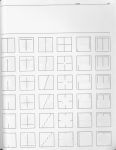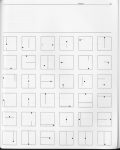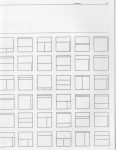tyvan-LookingOutwards01
“Typography has one plain duty before it and that is to convey information in writing. No argument or consideration can absolve typography from this duty. A printed work which cannot be read becomes a product without purpose.” –Emil Ruder’s Typography (1967)
Setting type to print in a letterpress allows a creator to meditate over the visual forms of letters, shapes, and edges. The process is repetitive, but it gives the typographer plenty of time to realize and consider variation and variables within the 2D space. In Typography, Ruder shows compositions, forms, and imagery centered on iteration and repetition. This book, originally my mom’s textbook in college, has inspired me to think loosely about typography. The studies in this book contrast with computation/coding because of their respective spacial inputs and time scales. Both methods of production allow a creator to view and edit their vision while implementing a reproducible image, but creating variation with physical typesetting requires manipulation of physical tools control output qualia. When rules are defined, then chance-based variables are put through the system, thousands (or billions) of iterations can be quickly produced.
A professor in CMU Design, Q Shim, produces many computational type studies based on iteration and repetition. In his digital process, he exploits the ability to generate meaning from environmental data or noise. His integration of contextual chaos through algorithms produces a new type of result, similar to Ruder’s approach.




Link to download high-res sections of Emil Ruder’s Typography:
https://drive.google.com/open?id=1Et0HN_DrKtZiH137icZ-FkLA484AM4O2
Link to Kyuha Shim:
http://kyuhashim.com/










